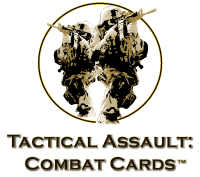Tips & Tricks… Elevated Terrain
When using elevated terrain in your battles it is usually necessary to mark each level of elevation (e.g. Low, Medium, High, etc.) so lines of sight, defensive benefits, etc. can be determined.
This is easy enough if your terrain is obvious like stepped hills (i.e. wedding cake style) or stark like buildings or rocky spires.
In those situations where the terrain is more gradually sloping, and thus lacks clear delineation, it can be somewhat challenging to determine where one elevation starts and another ends.
For those instances, here is a quick and dirty trick for determining the different elevations:
Mark the highest point of the terrain piece. Everything within a Very Short distance of that point is that highest elevation; everything more than a Very Short Distance from that point, but within a Short distance, is the next lowest elevation; everything farther than a Short distance but within a Medium distance is the next lowest elevation, and so on until you reach the lowest, flat terrain.
If the terrain is a ridge or crest line, mark the highest “point” as a line and apply the above from the applicable part of the line rather than from just a single point.
This also works in reverse for low ground like a depression or gully:
Mark the lowest point of the depression as “flat” ground – everything within a Very Short distance is “flat” as well. Everything more than Very Short, but within a Short distance, is Low elevation. Everything More than Short, but within a Medium, is Medium elevation, and so on.
Best of all, this works well if you don’t have any elevated (or sunken) terrain available at all. Simply place a marker on the battlefield denoting the highest (or lowest) point or line and follow the methods for determining elevations noted above.
We have used this method ourselves on many occasions and it has proven very useful. Hopefully it will make it easier for you to incorporate more elevated terrain into your battles as well!





